The baths are made up of four main parts: the Sacred Spring, the Roman Temple, the Roman Bath House, and the museum. The Sacred Spring is a natural hot spring that was believed by the Romans to have healing powers. The Roman Temple was built next to the spring and was dedicated to the goddess Sulis Minerva.
Bath
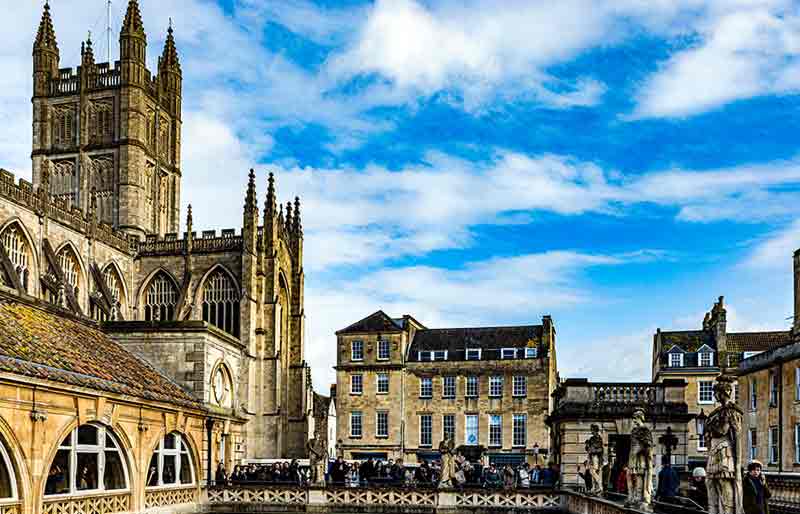
You've made it! Bath is a beautiful city in the southwest of England, known for its stunning Georgian architecture, Roman baths, and natural hot springs. The city was founded by the Romans in the 1st century AD, and they built a complex of baths and temples around the natural springs. The baths were used by the Romans for bathing, socializing, and religious ceremonies.
Today, the Roman Baths are one of the most popular tourist attractions in Bath. Visitors can explore the ruins of the baths, learn about their history, and even take a dip in the warm spring water.
In the 18th century, Bath became a fashionable spa town. The city's wealthy residents built elegant Georgian townhouses and crescents, many of which can still be seen today. One of the most famous examples is the Royal Crescent, a sweeping crescent of 30 townhouses.
Bath is also home to a number of other attractions, including the Bath Abbey, the Victoria Art Gallery, the Thermae Bath Spa, and Pulteney Bridge—a Palladian style seven-arch stone bridge that spans the River Avon. Also of interest is Mary Shelley's House of Frankenstein—a multi-sensory visitor attraction located in Bath, where Mary Shelley wrote much of her world-famous novel, Frankenstein, in 1816.
Roman Baths
The Roman Baths are one of the best-preserved Roman baths in the world. The baths were built in the 1st century AD and were used by the Romans for bathing, socializing, and religious ceremonies.
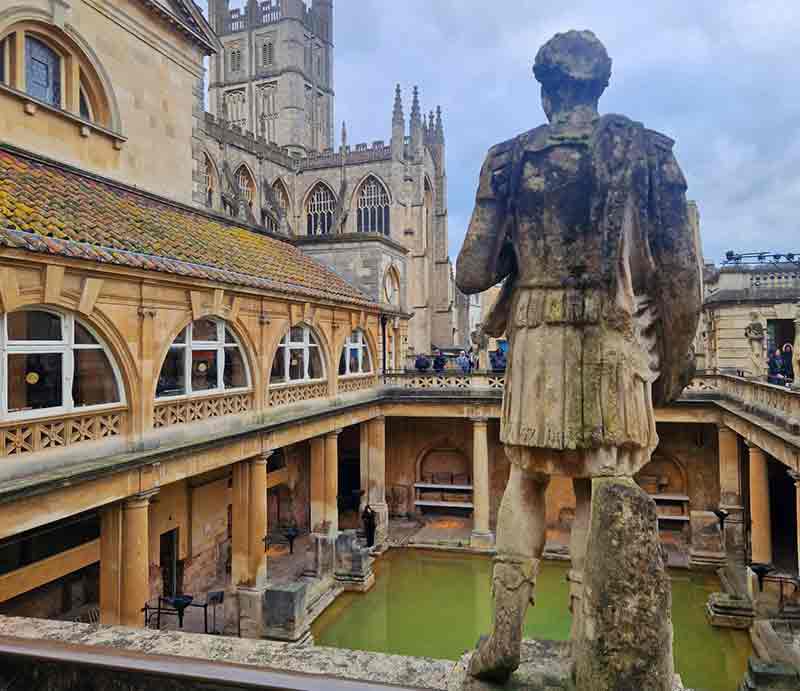
The Roman Bath House is the largest part of the baths and consists of a series of heated rooms, including a cold plunge pool, a warm pool, and a hot pool. The baths were also equipped with changing rooms, saunas, and steam rooms.
The museum at the Roman Baths houses a collection of Roman artifacts, including sculptures, jewellery, and coins. The museum also tells the story of the Roman baths and the people who used them.
Address: The Roman Baths, Abbey Church Yard, Bath, Somerset BA1 1LZ
Telephone Customer Services): 01225 477785
Website: Roman Baths
Opening times: The Roman Baths is open every day except 25 and 26 December. Refer to website for daily opening times.
Tickets: See website
Ticketing enquiries: Send email
Group and accessibility bookings: Send email
Food: No. Visitors can enjoy fine dining and views of the Roman Baths in the adjacent Pump Room Restaurant].
Accessibility: See website
Royal Crescent
The Royal Crescent is a row of 30 terraced houses laid out in a sweeping crescent in the city of Bath, England. It is one of the most iconic landmarks in Bath and is considered to be one of the finest examples of Georgian architecture in the world.
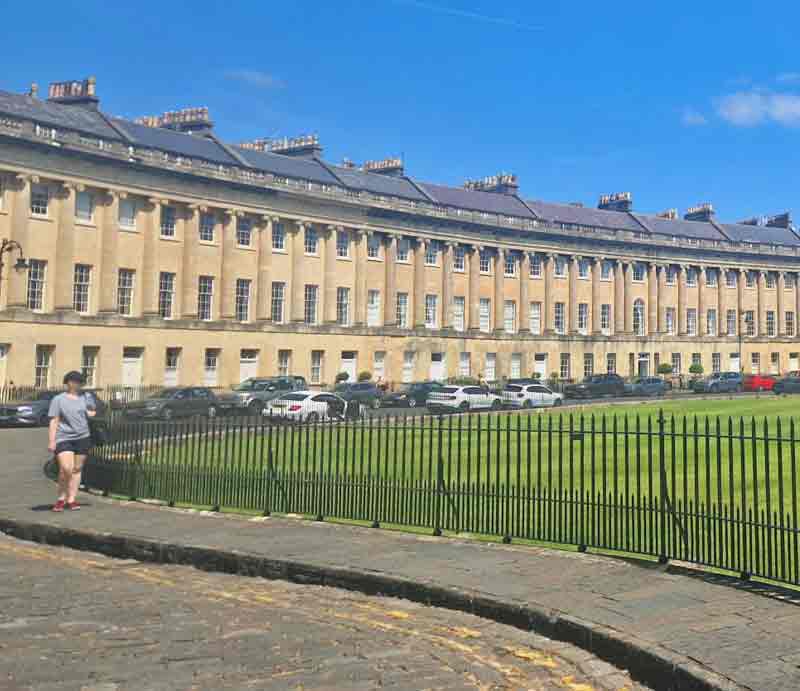
The Royal Crescent was designed by the architect John Wood, the Younger, and was built between 1767 and 1774. The houses are made of Bath stone and are decorated with columns, pediments, and pilasters. The crescent is open at both ends and offers stunning views of the surrounding countryside.
The Royal Crescent was originally built for wealthy residents of Bath. Today, the houses are a mix of private residences, hotels, and restaurants. One of the houses, No.1 Royal Crescent, is a museum that is open to the public. Visitors can tour the house and learn about what life was like for the wealthy residents of Bath in the 18th century.
The Royal Crescent has been featured in a number of films and television shows, including The Duchess, Vanity Fair, and Bridgerton.
Location: The Royal Crescent, Bath, Somerset BA1 2LR
Sally Lunn’s Historic Eating House & Museum
Sally Lunn’s Historic Eating House & Museum is one of Bath’s most iconic and popular tourist attractions. Located in a beautiful 15th-century building, the restaurant has been serving up its famous Sally Lunn buns since 1777.
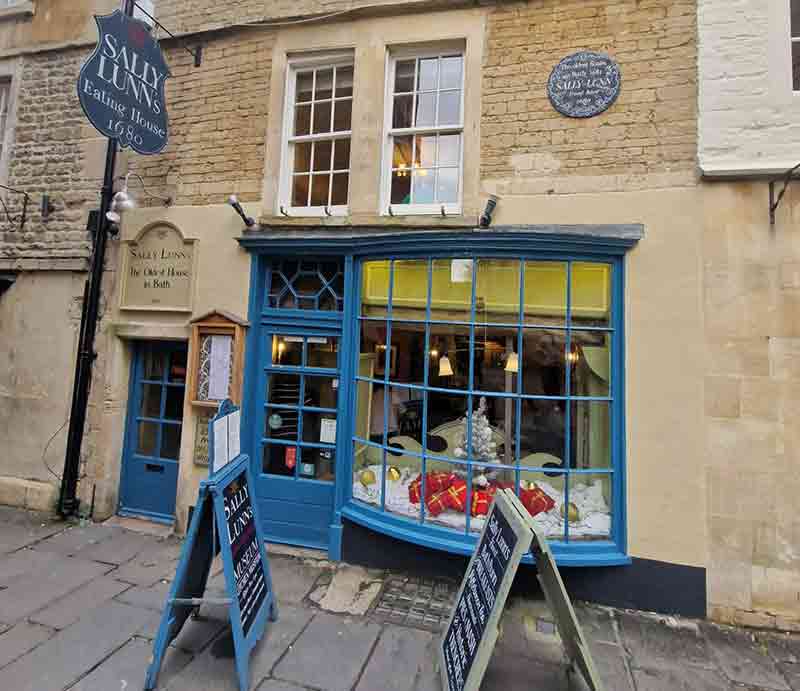
The Sally Lunn bun is a semi-sweet, brioche-like bun that is made with a secret recipe. It is said to have been created by Sally Lunn, a French Huguenot refugee who came to Bath in the 17th century.
The restaurant also has a museum downstairs, which tells the story of Sally Lunn and the history of the building. Visitors can see the original kitchen where the Sally Lunn buns were first baked, as well as a variety of other artifacts from the Georgian era
Address: Sally Lunn's, 4 North Parade Passage, Bath, Somerset BA1 1NX
Telephone: 01225 461634
Email: Send email
Website: Sally Lunn's
Opening times: Daytime Refreshment: Open every day from 10am No bookings. Day time menu served between 10am-6pm.
Evening Dinner by candlelight: Monday – Saturdays 5pm – 9pm (last arrivals / orders 9.00pm)
Sundays 5pm – 9pm (last arrivals / orders 9.00pm)
Kitchen Museum: Open every day 10am – 5pm (Saturday 10am – 6pm) – No bookings needed
Dogs: Not allowed
Disabled access: Sally Lunn’s is an old building and was not designed for disabled visitors. However, works undertaken in 1998 have enabled Sally Lunn's to ensure some wheelchair access to the ground floor refreshment room. At busy times it is suggested that you call in advance and anything that can be done to facilitate a smooth and simple visit will be done. The toilets remain at first floor level and there sadly there is nothing that can be done to improve this. The kitchen museum is in the cellar down a dozen or so stone steps.
Bath Abbey
Bath Abbey is a beautiful and historic church in the city and one of the largest examples of Perpendicular Gothic architecture in the West Country of England. The abbey was founded in the 7th century and has been rebuilt and restored several times over the centuries. The abbey is home to a number of tombs and memorials, including the tomb of author Jane Austen.
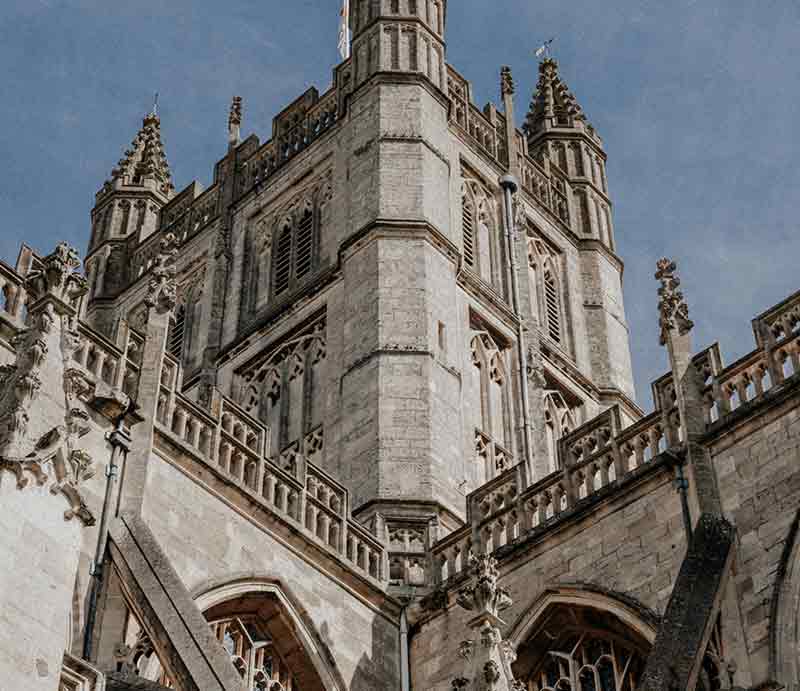
The abbey is home to a number of impressive features, including its fan vaulting, stained glass windows, and organ. The fan vaulting is particularly impressive, and it is one of the finest examples of its kind in the world. The stained glass windows date from the 14th to the 20th centuries and depict a variety of religious scenes. The organ is one of the largest in England and has over 4,000 pipes.
Address: Bath Abbey, Bath, Somerset BA1 1LT
Telephone: 01225 422462
Email: Send email
Website: Bath Abbey
Visiting: See website for opening times, travel & parking information.
Jane Austen Centre
The Jane Austen Centre in Bath is a museum and visitor attraction dedicated to the life and works of Jane Austen. It is located in a beautiful Georgian townhouse in the heart of Bath, the city where Austen lived for many years. The Centre offers a variety of exhibits and experiences that bring Austen's world to life.
Visitors can learn about Austen's life and writing, the social and historical context of her work, and the fashion and culture of the Regency era. There are also opportunities to dress up in Regency costume, write with a quill pen and ink, and enjoy a traditional Regency tea.
The Jane Austen Centre is a popular destination for fans of Austen's work, as well as anyone who is interested in the Regency era or Georgian Bath. It is a fun and informative place to learn about one of Britain's most beloved authors.
Address: The Jane Austen Centre, 40 Gay Street, Bath, Somerset BA1 2NT
Email: Send email
Website: The Jane Austen Centre
Tickets: Book tickets
Opening times: Monday: 10am-5:00pm, Tuesday: 10am-5:00pm, Wednesday: 10am-5:00pm, Thursday: 10am-5:00pm, Friday: 10am-5:00pm, Saturday: 10:00am-5:30pm, Sunday: 10am-5:00pm
Parking: There is a long stay carpark nearby in Charlotte Street
Food & Drink: There is a Tea Room
Gift shop: Yes
Bath is a great place to visit year-round. The city has a mild climate, and there are always events and festivals happening. In the summer, visitors can enjoy the city's parks and gardens, or take a boat trip on the River Avon. In the winter, visitors can enjoy the city's Christmas markets and festive atmosphere.
No matter what time of year you visit, Bath is sure to charm you with its Georgian elegance, Roman heritage, and natural beauty.
Help us with content
We are eager to improve and add to the City of Bath content on this website. If you would like to contribute or submit a review of Bath then please email details to us. If you have any Bath photos you'd like displayed on the website then email details—we'll then reply so you can send in photos. Thank you.
Bath Tours
Staying in London and want the convenience of a private chauffeur without the hassle of driving yourself? Then take a private chauffeur-driven tour to Bath. Get picked up from your London hotel and travel in comfort to the ancient Roman city. Explore the city's rich history and beautiful architecture, and visit its famous Roman Baths and Pulteney Bridge. Tours can be customized to your interests and combined with other popular UK tourist attractions.

